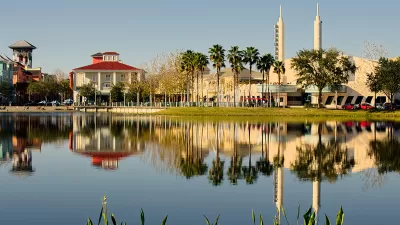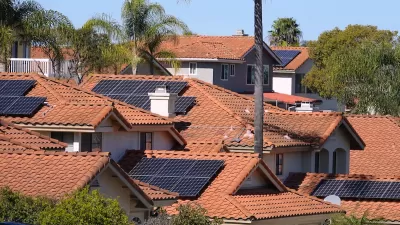Lucrative for homeowners and industrial customers who can afford them, solar panels are not without their own issues. The equity issue - whereby the claim is made that poorer customers subsidize the utility costs of wealthier ones, is investigated.
Giving utility users credit for the electricity their solar panels produce, a program known as "net metering", is critical for expansion of the solar industry, especially solar panel installers. Diane Cardwell interviews delighted homeowners and school district officials who are seeing their investments pay off, and unhappy utility officials who claim that their costs are increasing as more customers turn toward solar.
As more customers install solar panels and have their electricity bills reduced by the power the utilities are required to purchase, "the utilities not only lose valuable customers that help support the costs of the power grid but also have to pay them for the power they generate. Ultimately, the utilities say, the combination will lead to higher rate increases for everyone left on the traditional electric system."
"Low-income customers can't put on solar panels - let's be blunt," said David K. Owens, executive vice president of the Edison Electric Institute, which represents utilities. "So why should a low-income customer have their rates go up for the benefit of someone who puts on a solar panel and wants to be credited the retail rate?"
The equity issue became more important after the "CA Public Utilities Commission decided last month to effectively double the amount of solar power capacity eligible for net metering."
Representing residential utility consumers, a lawyer for the Utility Reform Network suggested a position that could please both utilities and solar power advocates.
"The goal of net metering should not be to give the shortest possible payback period; we're not trying to shower people with free money," said Matthew Freedman. "We want to make it a reasonable investment while protecting the interests of all the other customers on the system who have to pay for it."
FULL STORY: Solar Panel Payments Set Off a Fairness Debate

Planetizen Federal Action Tracker
A weekly monitor of how Trump’s orders and actions are impacting planners and planning in America.

Map: Where Senate Republicans Want to Sell Your Public Lands
For public land advocates, the Senate Republicans’ proposal to sell millions of acres of public land in the West is “the biggest fight of their careers.”

Restaurant Patios Were a Pandemic Win — Why Were They so Hard to Keep?
Social distancing requirements and changes in travel patterns prompted cities to pilot new uses for street and sidewalk space. Then it got complicated.

Platform Pilsner: Vancouver Transit Agency Releases... a Beer?
TransLink will receive a portion of every sale of the four-pack.

Toronto Weighs Cheaper Transit, Parking Hikes for Major Events
Special event rates would take effect during large festivals, sports games and concerts to ‘discourage driving, manage congestion and free up space for transit.”

Berlin to Consider Car-Free Zone Larger Than Manhattan
The area bound by the 22-mile Ringbahn would still allow 12 uses of a private automobile per year per person, and several other exemptions.
Urban Design for Planners 1: Software Tools
This six-course series explores essential urban design concepts using open source software and equips planners with the tools they need to participate fully in the urban design process.
Planning for Universal Design
Learn the tools for implementing Universal Design in planning regulations.
Heyer Gruel & Associates PA
JM Goldson LLC
Custer County Colorado
City of Camden Redevelopment Agency
City of Astoria
Transportation Research & Education Center (TREC) at Portland State University
Camden Redevelopment Agency
City of Claremont
Municipality of Princeton (NJ)




























